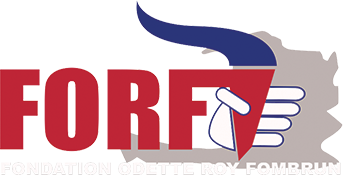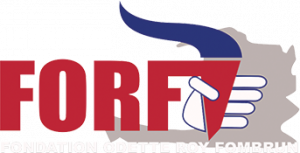Konbit Touris Lakay
In 2009, the FORF launched a program whose principal objective is to develop a form of tourism that is designed to bring visitors to many of Haiti’s hidden historical, natural, and cultural treasures. The FORF Program for economic development is principally focused on stimulating a complementary form of tourism to the one that Haiti’s Ministry of Tourism is advancing. Launched in 2009, the Program is built on three principles:
Principle #1: Identifying local sites throughout the country that are likely to be of interest to national and international tourists. The sites can be naturally scenic cascades, seafronts, or mountain tops. They can also consist of colonial ruins, indian cemeteries and caves, the locations of colonial battles, or other historically significant locations. The sites must be geographically close in order to enable the creation of various/diverse travel circuits throughout the country.
Principle #2: Participation and involvement of the local communities linked into these travel circuits. Local mayors and decision-makers organize the young labor force needed to develop, manage, and protect the sites on the circuit, and ensure safe travel in the region.
Principle #3: Involvement of haitian citizens living abroad (the diaspora), in the form of grants, donations, investments, and volunteerism. The diaspora that originated from the communities and regions from which the local sites are drawn are a key contributor to promoting tourism and economic development into each of the travel circuits.
The role that the FORF is committed to playing in this process is to organize support, raise funds, and launch a pilot project designed to test the viability of the process. Once initiated, these projects are expected to become self-managed and financed, and also contribute to the protection and embellishment of the environment, as well the stabilization and growth of the economy in the regions.
Project Plan (2009-2011):
- Phase 1: Feasibility Analysis, Create Project Plan, Build Local Alliances
- Phase 2: Fund-Raising for Pilot Project, Staff Resources
- Phase 3: Execute Pilot Project, Continue Fund-Raising for Full Project
- Phase 4: Assess Pilot Project and Continuity Analysis
- Phase 5: Extend Pilot Project to Full Circuit
Contactez-nous
+(509) 3170-6000
+1 (305) 767-2511
Fondation Odette Roy Fombrun
26 Rue Borno, Bois Moquette,
Petion-ville Haiti HT6140
© 2022 FORF INC. is a 501c3 Non-Profit Tax-Exempt Organization. Our EIN is 87-2222669

